Opening surveys Ris: English A22
1.c4 e5 2.Nc3 Nf6 3.g3 Bb4 4.Bg2 0-0 5.e4 Bxc3 6.dxc3 
| | The setup with 5.e4 named after Botvinnik involves an immediate capture on c3, otherwise White would play Nge2 and protect the Nc3. In the first part Robert Ris examines the capture with the d-pawn, which, however, Black does not need to fear. |
Skembris: English Symmetry A39
1.c4 c5 2.Nf3 Nc6 3.Nc3 g6 4.g3 Bg7 5.Bg2 Nf6 6.d4 cxd4 7.Nxd4 0-0 8.0-0 Qa5 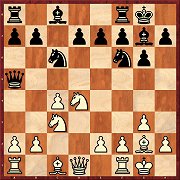
| | The white setup is disrupted with 8...Qa5. If the Nd4 moves away, Black can develop with ...d6. As Spyridon Skembris explains in his article, the most promising setup for White consists of 9.Nb3 Qh5 10.c5. |
Marin: Kangaroo Defence A40
1.d4 e6 2.c4 Bb4+ 3.Nc3 b6 
| | With 3.Nc3 (instead of the more popular moves 3.Bd2 and 3.Nd2) White signals that he would have nothing against the Nimzo-Indian. But Mihail Marin tries to avoid precisely this with his suggestion for Black. His extensive analyses prove that this can succeed. |
Sumets: Caro-Kann B12
1.e4 c6 2.d4 d5 3.e5 Bf5 4.Nf3 e6 5.Be2 Ne7 6.0-0 c5 7.c4 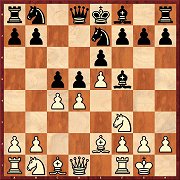
| | Here White has a lead in development and would like to open the centre. Andrey Sumets investigates the most important plans for both sides and at the moment considers that it is more up to Black to look for improvements. |
Illingworth: French C05
1.e4 e6 2.d4 d5 3.Nd2 Nf6 4.e5 Nfd7 5.f4 c5 6.c3 Nc6 7.Ndf3 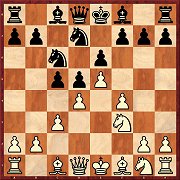
| | According to Max Illingworth White cannot force an advantage with this setup. However, it has become a little unfashionable and could set Black some unexpected problems. The article of our Australian author, from White’s point of view, represents some major help. |
Wyss: French C18
1.e4 e6 2.d4 d5 3.Nc3 Bb4 4.e5 c5 5.a3 Bxc3+ 6.bxc3 Ne7 7.Qg4 0-0 8.Bd3 f5 9.exf6 Rxf6 10.Bg5 Rf7 11.Qh5 g6 12.Qd1 e5 
| | Our Swiss author Jonas Wyss has successfully employed the pawn sacrifice 12...e5 several times in his practice. With the most exact play White can probably achieve a minimal advantage, but very probably that is impossible without some pre-knowledge. |
Souleidis: Philidor Defence C41
1.e4 d6 2.d4 Nf6 3.Nc3 e5 4.Nf3 Nbd7 5.Bc4 Be7 6.0-0 Nb6 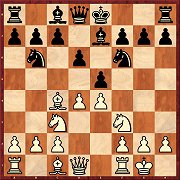
| | The move 6...Nb6 is a relatively new try. The idea: before a safe square on a2 beckons to the Bc4, it is challenged. Georgios Souleidis investigates on the DVD the most important variations and cannot see any advantage for White. So 6.a4 is already being played frequently these days. |
Kuzmin: Four Knights Game C47
1.e4 e5 2.Nf3 Nc6 3.d4 exd4 4.Nxd4 Nf6 5.Nc3 Bb4 6.Nxc6 bxc6 7.Bd3 0-0 8.0-0 Re8 
| | The drawing rate is high in the Four Knights Game, but Black can perhaps obtain more interesting positions with the move recommended by Alexey Kuzmin, 8...Re8. According to the state of theory so far, Black should hold his ground successfully. |
Karolyi: Queen's Pawn Game D02
1.Nf3 d5 2.g3 Nc6 3.d4 Bf5 
| | As Tibor Karolyi explains in his detailed article, Black would like with his plan to avoid the King’s Indian Attack. The Bf5 is aiming in two directions: with ...Nb4 the white setup is disrupted, but this is also frequently followed by a later ...Bh3. |
Krasenkow: Queen's Gambit/Semi-Slav D23/D43
1.d4 d5 2.c4 e6 3.Nf3 Nf6 4.Nc3 dxc4 5.Qa4+ 
| | With the queen check White avoids the Vienna Variation (5.e4 Bb4), but after 5...c6 6.Qxc4 the Semi-Slav has been reached. Michal Krasenkow presents a suggestion for White which forces Black to play very precisely. |
Postny: Queen's Gambit D37
1.d4 d5 2.c4 e6 3.Nf3 Nf6 4.Nc3 Be7 5.Bf4 0-0 6.e3 Nbd7 7.c5 Ne4 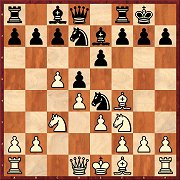
| | The theory of the 5.Bf4 variation has grown enormously in recent years. As Evgeny Postny explains, with 7...Ne4 Black would like not only to avoid theory, but also to become slightly more active himself. It appears to be sufficient for equality, but White retains the activity. |
Schipkov: King's Indian E60
1.d4 Nf6 2.c4 g6 3.f3 Bg7 4.e4 d6 5.Ne2 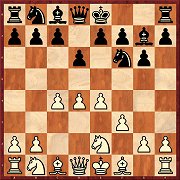
| | The move 3.f3 has become very popular in recent years as a weapon against the Grünfeld Defence. But if Black plays the King’s Indian White can also abstain from a transposition to the Sämisch System – he omits Nb1-c3. Boris Schipkov presents the latest results. |
Szabo: King's Indian E90
1.d4 Nf6 2.c4 g6 3.Nc3 Bg7 4.e4 d6 5.Nf3 0-0 6.h3 e5 7.d5 Nh5 8.g3 
| | This variation has been uncommonly popular of late. Krisztian Szabo has investigated the most important new developments and sees “a sound variation which is playable for both sides”. Much depends on how well you understand the ensuing positions. |
|














